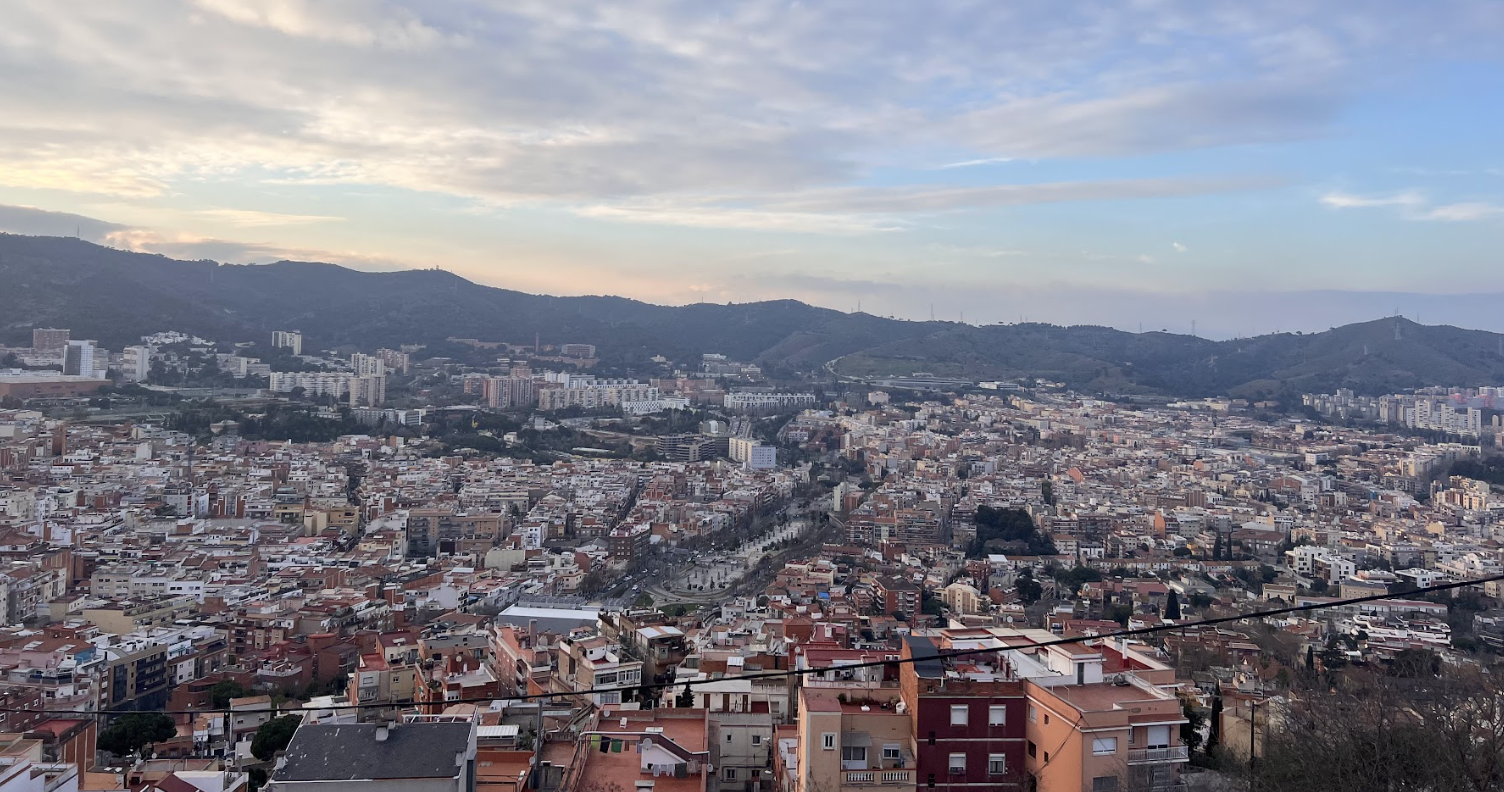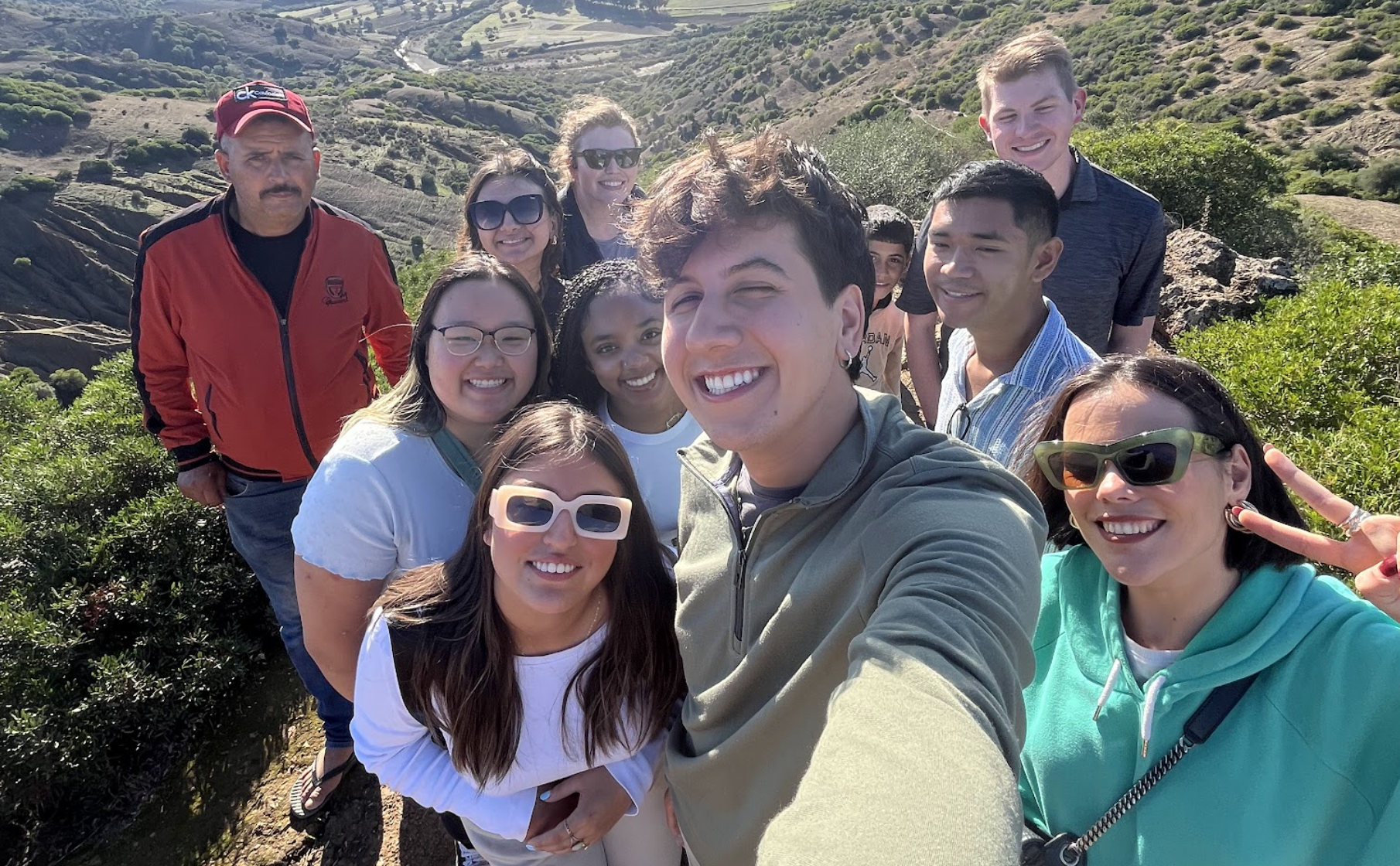Over the next few days, we will be publishing a student’s retelling of her stay with Barcelona SAE. Isabel Elliot is an undergraduate neuroscience major at Boston University and was a participant in our first 10-day January Term program called FOOD FIGHT: Constructing and Communicating Regional Identity in Spain and the EU with communications students from the University of Colorado Denver.
In her own words, here are the first of Isabel’s entries that will bring satisfaction to both travelers and foodies alike.
Day 3 – January 9th
Oh man. Today was awesome. We went on a kind of crazy hike that I don’t think we were terribly prepared for. Being from Colorado, we expect a hike to be rocky and have very mountainous terrain. This was pretty much just straight up a hill on a paved street. It was beautiful once we got to the top, but quite a hike to get there. The whole point of the hike was to get to a restaurant for a calçotada. A calçotada is a feast of calçots that usually happens this time of year. Calçots are a vegetable that is kind of a cross between an onion and a leek. They are more similar to a leek in flavor but look like an oversizeallion. During a calçotada, the calçots are cooked over a fire until the outside is charred but the inside is warm and tender. Then everyone dons a bib, takes off the outer charred layer, dips it in the calçot sauce and bottoms up! It was so much fun and an awesome excuse to get messy with our food.
Along with the calçots, we also made our own pan con tomate before sitting down to a feast of butifarra (sausage), murcilla (blood sausage), and lamb. It was one of the most interactive and fun food experiences we’ve had so far.
Day 4 – January 10th
Today wasn’t very scheduled, so following classes we went to the Ferran Adriá exhibit at the Palau Robert, which is a free museum. Ferran Adriá is influential in gastronomy globally because he is a pioneer in the movement to deconstruct food and making it almost like a science experiment. He is the mastermind behind the foams that taste like soup or vegetable and very small dishes with a ton of flavor. The exhibit was a really interesting way to see an example of how food has become less about simply fuelling our bodies and more about the flavor experience. I went with Mercedes, Alejandra, Travis, and my mom and through almost the entire exhibit, Mercedes and I were gasping in surprise at the amazing things that Ferran Adriá had figured out how to do with food. As well as chuckling at the fact that a meal at his restaurant probably wouldn’t be very filling.
Following the exhibit, we tried to go La Pedrera (an apartment building designed by Gaudí) but it was closed so we kept walking until we stumbled upon Casa Batlló, which is another building designed by Gaudí. We decided to go in and it was absolutely beautiful. A wealthy Barcelona family owns it so it doesn’t receive museum funding from the government, thus it is kind of expensive to get in. However, it was definitely worth the price. After seeing La Sagrada Familia, it was easy to see some of the themes in Gaudís work. Casa Batlló was designed with an ocean theme in mind and it was easy to see how that fit easily into his natural style.
After our bout of sight seeing, we had a guest speaker on the Slow Food Movement as well as the kind of cuisine that Ferran Adriá has introduced to the world. He talked about the meaning behind the slow food movement, that being knowing where your food is coming from and trying to counter the ever-present culture of fast food. While slow food almost tries to take food to its most basic element, the new cuisine of Ferran Adriá goes in the opposite direction while still attempting to maintain some integrity with food.



